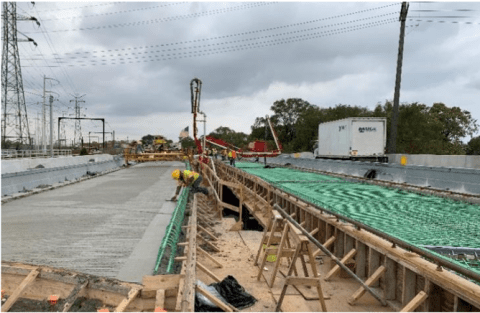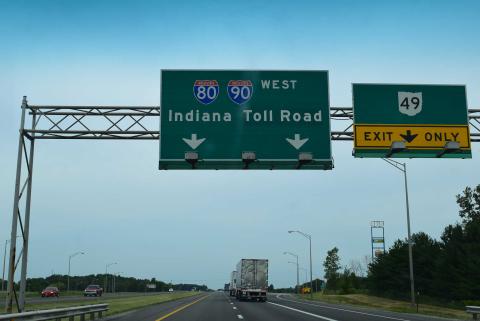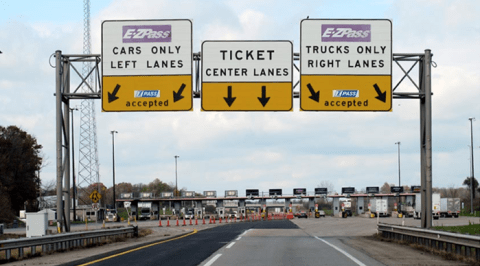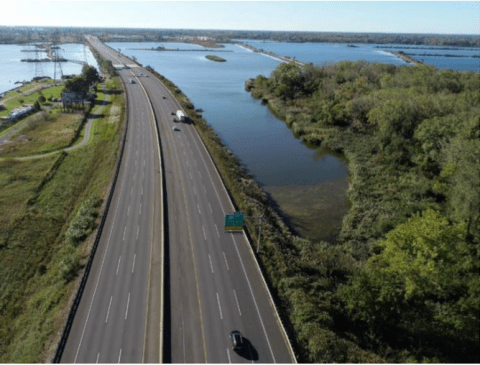Breadcrumb
IFM Indiana Toll Road
The Indiana Toll Road (ITR) is located at the northern edge of the state which runs east to west from Chicago, in the west to Ohio in the east and the 157-mile road has a direct connection to the Chicago Skyway. Private investment provided a payment of $3.85bn to the state of Indiana, which was used to fund their Major Moves initiative, a 10-year plan for updating and building roads throughout the state.
The investment in numbers
- 157 Miles Road running through Indiana
- $3.85 Billion Private investment provided to the state of Indiana
- 10 Years Planned for updating and building roads throughout the state
Funding
In 2006, the Indiana Toll Road was privatised in a lease agreement granting the private operator the exclusive right to operate and collect revenues from the toll road for an agreed 75 years. The lease agreement includes operating standards related to the operation, maintenance and tolling of the ITR that the private operator must comply with. Upon entering the lease, the state was able to use a portion of the proceeds from the lease to clear outstanding debt associated to the toll road. There was a $3.85bn payment to the state from private equity and senior bank debt and as part of the concession, the operator pledged to spend $200 million on capital improvements to the facility during the first three years of the lease and approximately $4.4 billion over the life of the concession.
The Project
Due to reduced traffic numbers because of the Great Recession, lower use of the road resulted in lower toll revenue than expected to service the company’s debt even though earnings had increased from privatization. The significant debt burden caused bankruptcy for the private consortium. The original package was structured as a 9-year, interest only, bullet loan hedged with a 20-year accreting interest rate swap whose rates pre-set at 3% to 11.3% by 2023. Whilst revenue streams and traffic patterns improved, the total project debt nearly doubled from $3.4bn to $6bn, a consequence of declining interest rates creating mark-to-market losses on the swap. This prevented early refinancing from happening and increased the project’s debt load and effective interest cost. In March 2015, IFM Global Infrastructure Fund purchased the toll road for $5.7bn, using capital from US pension funds and other investors, and inherited the remaining 66 years of the lease agreement.
Benefits of the system
Indiana received a down payment of $3.8bn for Gov. Mitch Daniels’ Major Moves initiative, a 10-year plan for building and fixing roads throughout the state. Governor Daniels funded his programme with proceeds from the public-Private-Partnership. The proceeds of the Indiana Toll Road were part of the package that the state of Indiana used to complete 87 roads, 480 new centreline miles, 60 new or reconstructed interchanges and 1400 bridges rehabilitated or replaced since 2006. Updated infrastructure on toll road such as electronic toll collection (E-ZPass) was also implemented. Since the beginning of IFM ownership in 2015, the new operator has:
- Reconstructed over 50% of pavement lane miles and 20% of bridges on ITR.
- Overhauled the safety culture and delivered a significant decrease in injuries for the labour force. All major projects were completed with zero lost time injuries.
- Completed customer safety improvements with the roll out of Intelligent Transportation Systems, which has critically reduced accidents on the road
Community benefits and engagement
Innovative 2018 Concession Amendment allowed for $1bn in payments to the State which has been used to fund planned road projects in seven Indiana counties. The transaction also included a commitment to spending $50m on initiatives to improve customer experience. Significant community support including donations to a school food relief programme and providing free access to fibre internet,facilitating remote learning during the pandemic’s lockdown period. Installed electric vehicle charging stations at travel plazas and all new buildings and plazas constructed with an environmental focus achieving gold or silver LEED certifications.



